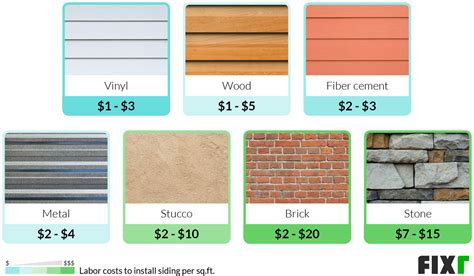Your Ultimate Guide to Siding Replacement Costs
Replacing your siding is a significant home improvement project, impacting both your home's curb appeal and its protection from the elements. Understanding the costs involved is crucial for budgeting and planning. This comprehensive guide breaks down the various factors influencing siding replacement costs, helping you navigate this investment with confidence.
What Factors Influence Siding Replacement Costs?
Several key factors contribute to the overall cost of siding replacement. These include:
-
Type of Siding: Different siding materials vary drastically in price. Vinyl siding is generally the most affordable, while fiber cement, wood, and metal siding options command higher prices. The cost difference often reflects durability, maintenance requirements, and aesthetic appeal.
-
Siding Material Quality: Even within a single siding type (e.g., vinyl), quality levels vary. Higher-quality materials often boast enhanced durability, colorfastness, and warranties, justifying their increased cost.
-
House Size and Complexity: The square footage of your home directly impacts material needs and labor costs. Homes with complex architectural details, multiple stories, or difficult-to-access areas will naturally require more time and effort, driving up the overall expense.
-
Labor Costs: Labor costs are a significant portion of the total project expense. Factors such as your location (labor rates vary geographically), the contractor's experience and reputation, and the complexity of the job all influence these costs.
-
Existing Siding Removal: Removing old siding adds to the project's cost. The condition of the existing siding, the presence of asbestos (requiring specialized and costly removal), and the complexity of the removal process all play a role.
-
Permits and Inspections: Most areas require permits for significant home renovations, adding to the upfront costs. Inspections throughout and after the project completion also contribute to the overall expense.
-
Additional Services: The total cost may include additional services, such as repairs to underlying sheathing, insulation upgrades, window and door trim replacement, and cleanup.
How Much Does Siding Replacement Typically Cost?
Providing an exact cost is difficult without a detailed assessment of your specific project. However, we can offer some general ranges:
-
Vinyl Siding: Typically ranges from $3 to $12 per square foot, with the average falling between $5 and $8 per square foot.
-
Fiber Cement Siding: Generally costs between $8 and $20 per square foot, sometimes exceeding this range depending on quality and complexity.
-
Wood Siding: Can range from $10 to $30+ per square foot, highly dependent on wood type and quality.
-
Metal Siding: Typically falls between $10 and $25 per square foot, offering excellent longevity but often carrying a higher initial investment.
These prices encompass both materials and labor. Remember that these are estimates, and your actual costs could be higher or lower depending on the factors mentioned above.
What About Hidden Costs?
It's crucial to anticipate potential hidden costs to avoid unexpected expenses. These can include:
-
Unexpected Repairs: Discovering rotted wood or damaged sheathing during removal can significantly increase the cost.
-
Material Waste: Accurate material estimations are critical; insufficient materials can lead to delays and additional purchases.
-
Disposal Fees: Proper disposal of old siding material can generate added costs.
-
Unexpected Delays: Weather conditions or unforeseen complications can lead to project delays, impacting labor costs.
How to Get Accurate Cost Estimates
To obtain accurate estimates, follow these steps:
-
Get Multiple Bids: Contact at least three reputable siding contractors for detailed, written estimates.
-
Compare Apples to Apples: Ensure all bids include the same scope of work, including materials, labor, permits, and cleanup.
-
Verify Contractor Credentials: Check licenses, insurance, and reviews before selecting a contractor.
-
Ask Clarifying Questions: Don't hesitate to ask questions about materials, labor, warranties, and potential hidden costs.
Can I Save Money on Siding Replacement?
Yes, there are ways to potentially reduce costs:
-
Shop Around for Materials: Compare prices from different suppliers to find the best deals on siding materials.
-
Consider DIY (with caution): If you're skilled and comfortable with home improvement projects, tackling some aspects yourself can save on labor costs (but be realistic about your abilities).
-
Choose Less Expensive Siding Options: While sacrificing some durability or aesthetic appeal, opting for less expensive siding types can lower overall costs.
Replacing your siding is a significant investment. By understanding the influencing factors, obtaining accurate estimates, and planning carefully, you can manage costs effectively and enjoy the benefits of a beautiful, protected home for years to come. Remember, prioritizing quality materials and skilled labor is essential for long-term value and peace of mind.

